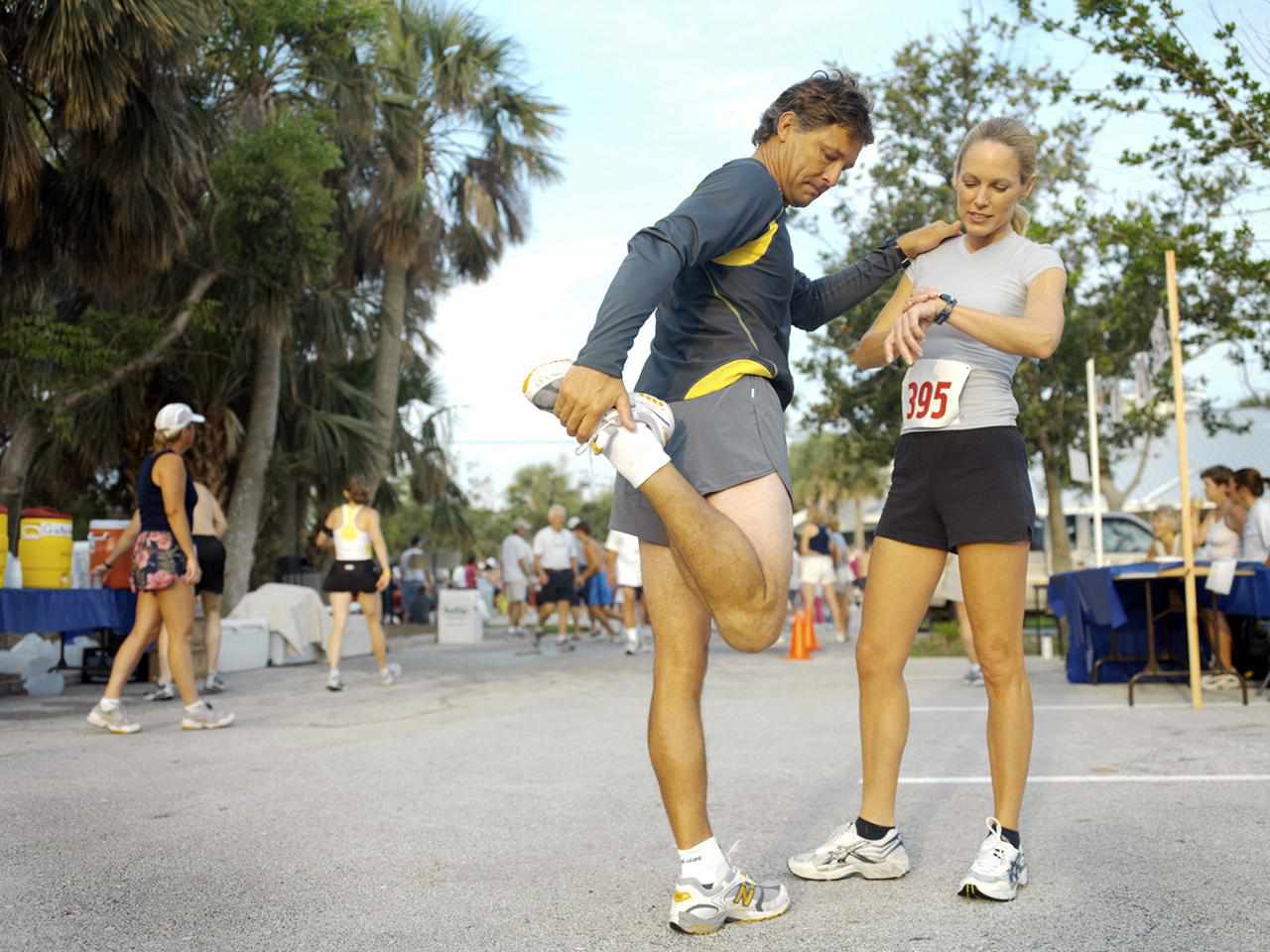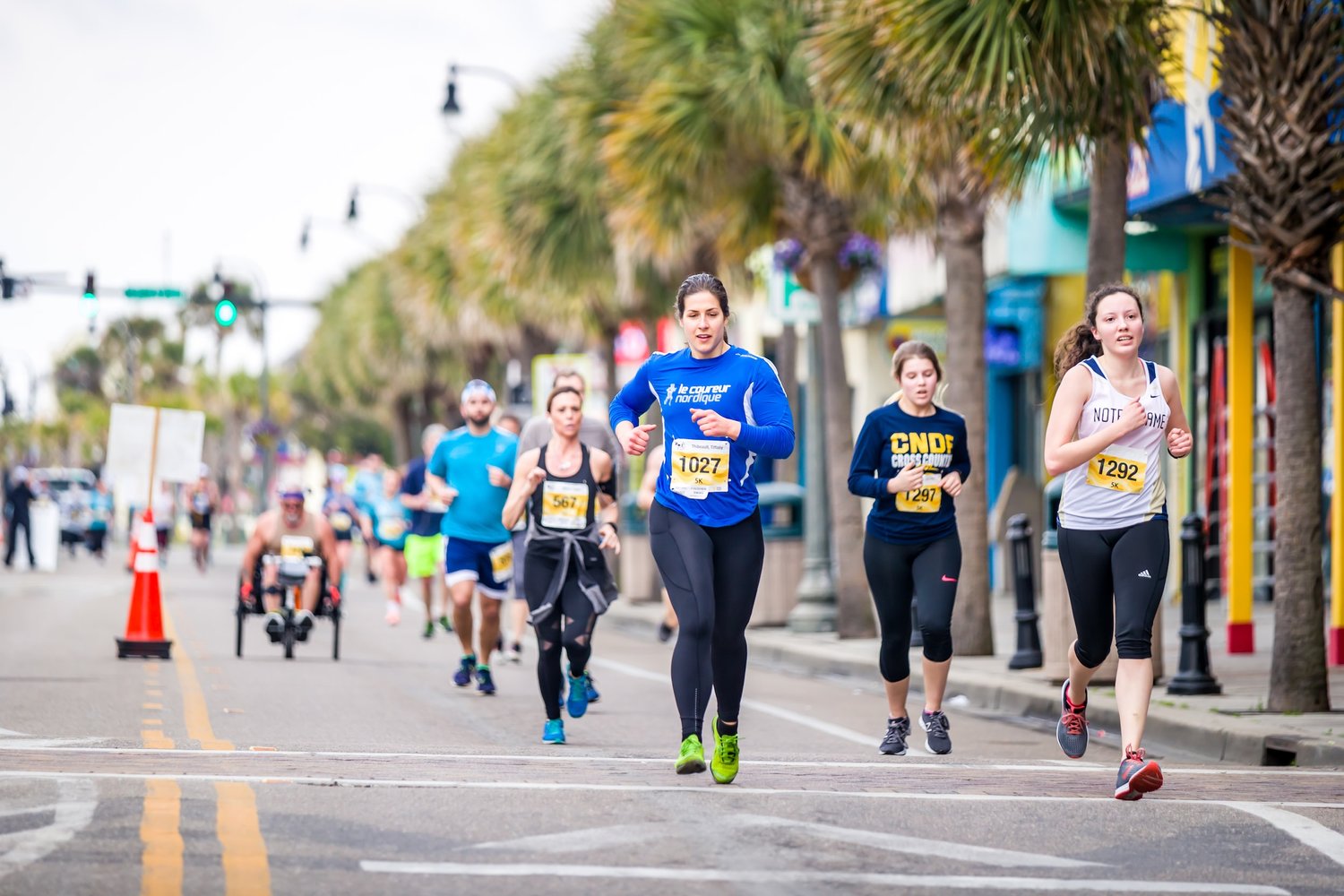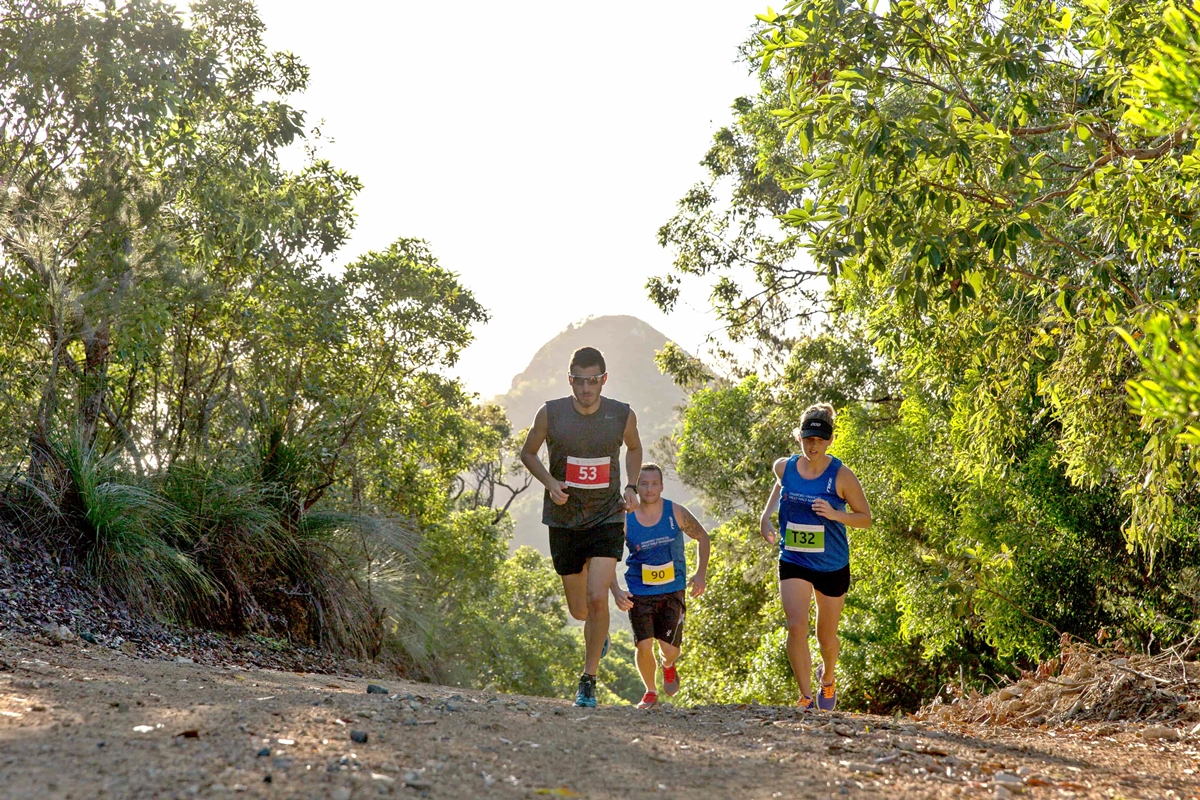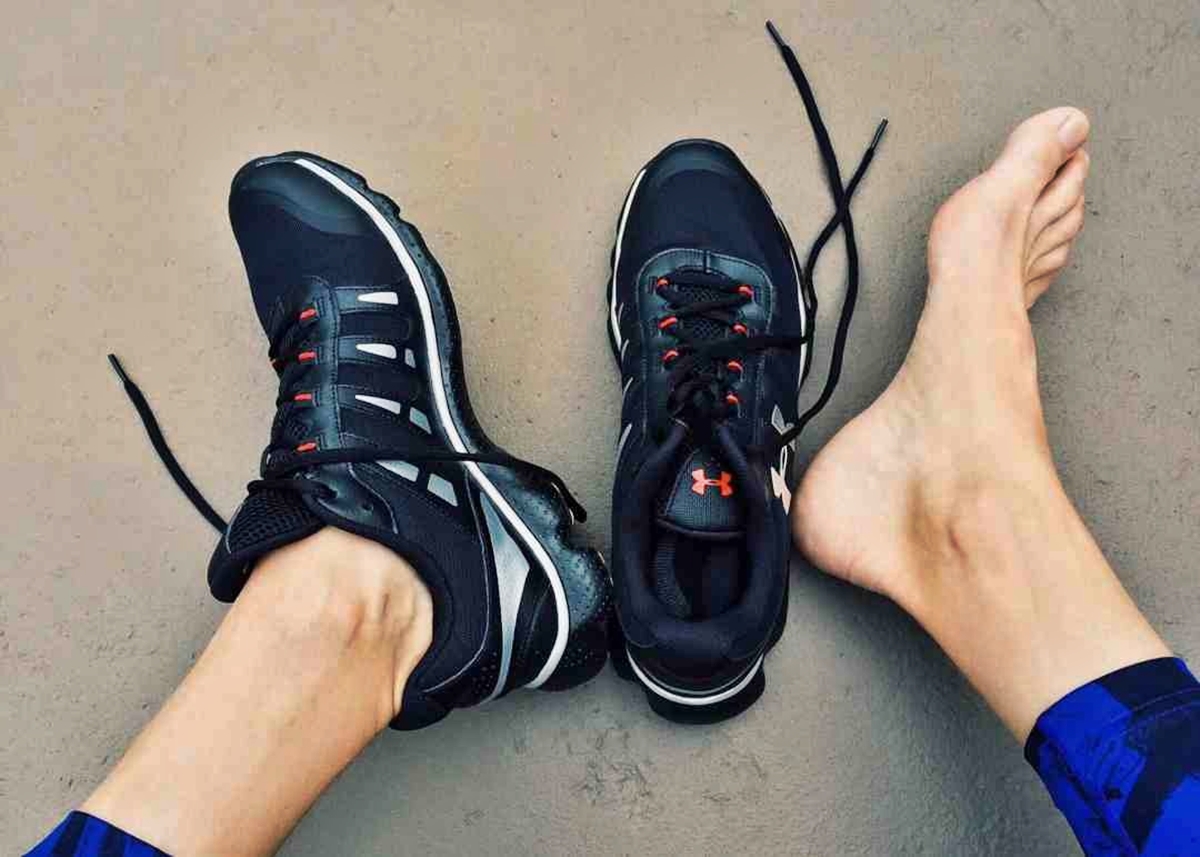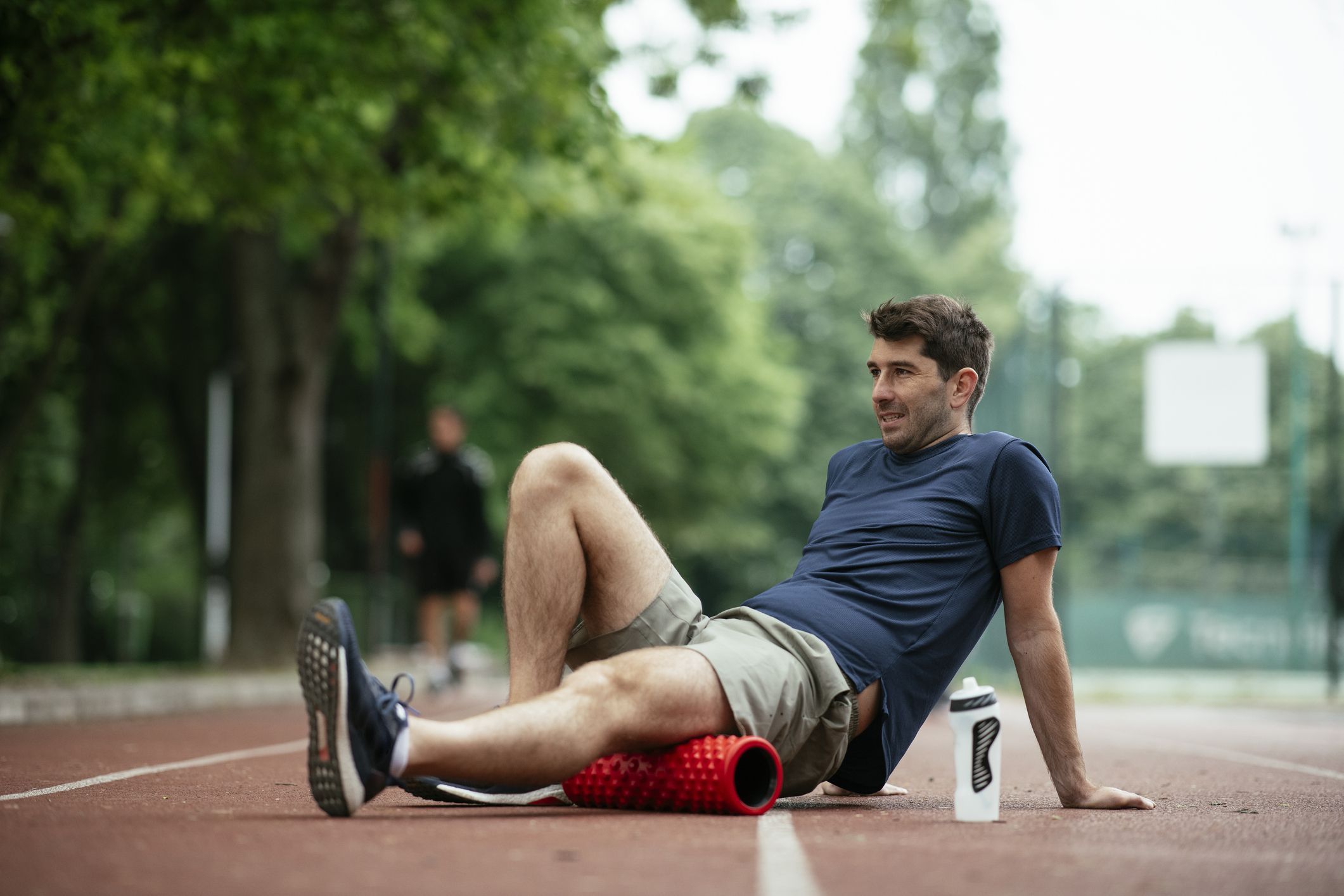

Featured
How Long To Rest After A Half Marathon
Modified: January 2, 2024
Discover how long you should rest after completing a half marathon. Get expert tips and advice in this featured guide.
Introduction
Completing a half marathon is no small feat. It requires weeks, if not months, of dedication, training, and mental preparation. As you cross that finish line, a surge of accomplishment washes over you, and you may wonder, “What’s next?”
While planning your next race or setting new goals is important, it’s equally essential to prioritize your recovery after a half marathon. Resting and allowing your body to recover properly is crucial in avoiding injuries and maintaining long-term performance. In this article, we will delve into the significance of rest after a half marathon, factors to consider, and how to optimize your recovery period.
Resting after a half marathon can be a challenging concept for many runners to grasp. You’ve just invested immense physical and mental energy into a race, and the adrenaline may still be flowing through your veins. But pushing yourself too quickly back into training without giving your body adequate time to rest can have detrimental effects on your performance and overall well-being.
So, how long should you rest after a half marathon? The answer isn’t one-size-fits-all, as it depends on various factors such as your level of fitness, race performance, and recovery rate. Taking enough time off allows your muscles, joints, and cardiovascular system to recover, rebuild, and strengthen.
During the resting period, your body undergoes the important process of repairing microtears in your muscle fibers caused by the repetitive impact of running. Rest also gives your immune system a chance to replenish and your hormonal balance to stabilize. It’s essential to honor this recovery phase to ensure the longevity of your running career and prevent burnout.
Understanding the Importance of Resting after a Half Marathon
Resting is often underestimated and overlooked by runners, but it is a critical component of proper training and recovery. After crossing the finish line of a half marathon, your body is in a state of fatigue and stress. It’s important to recognize that the physical and mental toll of a long-distance race requires adequate rest for optimal recovery.
Resting after a half marathon allows your muscles to repair and rebuild. When you run, your muscles undergo a process called microtrauma, where tiny tears occur in the muscle fibers. These microtears lead to inflammation and soreness. Resting allows your body to repair these tears, resulting in stronger and more resilient muscles. Without proper rest, the risk of injury and overuse becomes greater.
Moreover, rest is essential for preventing burnout and mental fatigue. Racing takes a toll on your mental well-being as well as your physical state. Giving yourself time to relax and rejuvenate not only helps you recover physically but also renews your mental focus and motivation. It’s important to remember that rest does not mean complete inactivity. It means taking a break from intense training and allowing your body to recover through light activities or cross-training.
Rest also plays a vital role in optimizing your immune system. Endurance exercise can temporarily impair your immune function, making you more susceptible to illness and infection. Taking time to rest and recover after a half marathon allows your immune system to replenish and strengthen, reducing the risk of getting sick.
Listening to your body’s signals and giving yourself permission to rest is crucial. Signs that indicate the need for more rest include persistent muscle soreness, fatigue that doesn’t subside with rest, disrupted sleep patterns, decreased motivation, and mood swings. Ignoring these signals and pushing yourself too hard can lead to overtraining and ultimately hinder your progress.
Remember, the primary goal of resting after a half marathon is to allow your body to recover fully and to strike a balance between rest and active recovery. By doing so, you’ll be able to return to training stronger and more prepared for your next running challenge.
Factors to Consider When Deciding How Long to Rest
The duration of your post-half marathon rest period can vary depending on several factors. Understanding these factors will help you make an informed decision about how long to rest before resuming your training. Here are some key considerations:
- Training Volume: The intensity and volume of your training leading up to the half marathon play a significant role in determining the length of your rest period. If you followed a rigorous training plan and pushed your body to its limits, you will likely need a longer rest period to allow for proper recovery.
- Personal Fitness Level: Your current level of fitness and running experience also impact how long you should rest. More experienced and seasoned runners may require shorter rest periods compared to novice runners.
- Race Performance: Your performance in the half marathon can provide valuable insight into your recovery needs. If you pushed yourself to achieve a personal best or ran at a fast pace, it is advisable to take a longer rest period to allow for full recovery.
- Age and Overall Health: Age and general health can affect your body’s ability to recover. Younger individuals tend to bounce back faster, while older runners may need a longer rest period. Additionally, any underlying health conditions or injuries may warrant extra rest and recovery time.
- Individual Recovery Rate: Every person’s body is unique, and everyone responds differently to exercise and recovery. Pay attention to how your body feels during the initial days after the race. If you’re still feeling fatigued and experiencing muscle soreness, it’s a sign that you may need more rest before returning to training.
- Future Goals and Races: If you have upcoming races or fitness goals, it’s essential to consider those when deciding how long to rest. Giving yourself ample time to recover after the half marathon ensures you can perform at your best in future races.
Keep in mind that these factors are not mutually exclusive, and they may overlap in determining your resting period. It’s crucial to assess each aspect individually and collectively to make an informed decision about the duration of your rest period.
Ultimately, remember that rest is not a sign of weakness but a strategic and essential part of your training journey. Give yourself the time and space to recover fully, and you’ll be better equipped to continue progressing toward your running goals.
Listening to Your Body: Signs that Indicate the Need for More Rest
Resting after a half marathon doesn’t mean simply taking a predetermined number of days off. It’s important to listen to your body and pay attention to the signals it’s sending you. Here are some signs that indicate the need for more rest:
- Persistent Muscle Soreness: Feeling soreness and stiffness in your muscles after the race is normal. However, if the soreness persists for an extended period or becomes increasingly intense, it may be a sign that you need more rest. Pushing through the pain can lead to further muscle damage and delay your recovery.
- Unrelenting Fatigue: Feeling fatigued after a race is expected, but if you’re still struggling with extreme fatigue that doesn’t improve with rest, it’s a clear sign that your body needs more time to recover. Don’t ignore this fatigue and give yourself permission to rest until your energy levels begin to stabilize.
- Disrupted Sleep Patterns: Difficulty falling asleep or staying asleep can be a sign that your body is under stress and needs more rest. Quality sleep plays a crucial role in recovery, so if you’re experiencing sleep disturbances after the race, it’s an indication that you should prioritize rest.
- Decreased Motivation and Mood Swings: Feeling unmotivated or experiencing sudden mood swings can be a result of physical and mental exhaustion. Rest is not only about healing the body but also renewing the mind. Take note of any significant changes in your motivation and mood and allow yourself time to recover mentally and emotionally.
- Recurring or Lingering Injuries: If you have any existing or recurring injuries that flare up after the race, it’s crucial to address them and give your body the rest it needs to heal. Ignoring injuries can lead to long-term damage and hinder your future training.
Listening to your body is paramount. Taking the time to rest when needed will help prevent overtraining, reduce the risk of injuries, and maintain your long-term running performance.
Remember that rest is not a sign of weakness or laziness, but rather a strategic approach to training. By giving your body the rest it requires, you’ll come back stronger and more motivated to tackle new challenges in your running journey.
Recommended Resting Periods after a Half Marathon
The duration of your resting period after a half marathon can vary depending on several factors, including your fitness level, race performance, and personal recovery rate. While there is no one-size-fits-all answer, here are some general guidelines to consider:
- Immediate Post-Race Recovery: After crossing the finish line, give yourself at least 1-2 days of complete rest. This means avoiding any intense workouts or running activities to allow your body to recover from the physical and mental exertion of the race.
- Short-Term Rest: Plan for a rest period of about 7-10 days after the race. During this time, focus on light activities such as walking, gentle stretching, or low-impact cross-training exercises like cycling or swimming. This allows your muscles to recover and repair without putting excessive strain on them.
- Recovery Runs: After the initial rest period, you can gradually introduce short and easy runs into your routine. Start with shorter distances and slower paces, gradually increasing the intensity and duration over a period of 1-2 weeks. This helps to ease your body back into running without overexertion.
- Active Recovery: Incorporate active recovery activities into your routine, such as foam rolling, yoga, or strength training. These activities help improve flexibility, enhance muscle recovery, and prevent injury. Focus on exercises that target the specific muscles used during the half marathon.
- Long-Term Rest: Depending on your individual needs, consider an extended rest period of about 2-4 weeks. During this time, you can engage in a variety of low-impact activities and cross-training exercises to maintain your fitness without placing excessive stress on your body. Use this time to recharge mentally and physically before gradually returning to your regular training routine.
It’s important to listen to your body throughout the resting period and adjust accordingly. If you’re still experiencing excessive fatigue, soreness, or any lingering injuries, extend your rest period as needed. Pushing yourself too soon can set back your recovery and increase the risk of further complications.
Keep in mind that these recommendations are general guidelines, and it’s essential to customize them based on your specific needs and recovery progress. Consulting with a coach or medical professional can provide valuable insights and ensure you’re on the right track.
Remember, rest is an integral part of your training journey. Embrace it as an opportunity to recharge, rebuild, and prepare yourself for future running challenges.
Active Recovery Strategies to Promote Faster Recovery
Active recovery is a key component of the post-half marathon resting period. Engaging in specific activities and techniques can help promote faster recovery and prepare your body for a successful return to training. Here are some active recovery strategies to consider:
- Low-Impact Cardiovascular Exercises: Incorporate low-impact exercises such as cycling, swimming, or using an elliptical machine. These activities help improve blood flow, increase oxygen delivery to your muscles, and flush out metabolic waste products.
- Yoga and Stretching: Practicing yoga or engaging in regular stretching routines can help improve flexibility, relieve muscular tension, and promote relaxation. Focus on stretching the key muscle groups used during running, such as the calves, hamstrings, and quadriceps.
- Foam Rolling or Self-Myofascial Release: Use a foam roller or massage tools to target specific muscles and release tension. Foam rolling helps break up adhesions in the muscles and fascia, promoting muscle recovery and reducing soreness.
- Strength Training: Incorporate strength training exercises to maintain and strengthen the muscles used in running. Focus on exercises that target the lower body and core, such as squats, lunges, hip bridges, and planks. Start with light weights or bodyweight exercises and gradually increase the intensity over time.
- Cross-Training: Engage in activities that complement running, such as swimming, cycling, or rowing. Cross-training helps improve cardiovascular fitness, provide a break from running-specific movements, and reduce the risk of overuse injuries.
- Massage and Bodywork: Consider getting regular massages or other forms of bodywork to help loosen tight muscles, improve circulation, and reduce muscle soreness. Professional massage therapists can target specific areas of tightness or discomfort.
- Proper Nutrition and Hydration: Focus on providing your body with the necessary nutrients and fluids for optimal recovery. Consume a balanced diet rich in lean proteins, complex carbohydrates, and healthy fats. Stay hydrated by drinking enough water throughout the day.
- Rest and Sleep: Active recovery also involves getting adequate rest and quality sleep. Allow your body time to repair and regenerate by incorporating regular rest days into your training routine and aiming for 7-9 hours of sleep per night.
Remember, active recovery is not about pushing yourself to the limit but rather engaging in gentle, recovery-focused activities that support your body’s healing process. Be mindful of your body’s feedback and adjust the intensity and duration of your active recovery activities as needed.
By implementing these active recovery strategies, you can accelerate your recovery, reduce muscle soreness, and improve overall performance. Enjoy the process and take full advantage of this time to prioritize self-care and rejuvenation.
Common Mistakes to Avoid During the Resting Period
Resting after a half marathon is crucial for your body’s recovery, but it’s important to approach it correctly to maximize its benefits. Here are some common mistakes to avoid during the resting period:
- Insufficient Rest: One of the biggest mistakes is not giving yourself enough time to rest and recover. Pushing yourself back into training too soon can lead to overuse injuries, diminished performance, and burnout. Listen to your body and respect the rest it needs.
- Complete Inactivity: While rest is important, complete inactivity can also be detrimental. Maintaining some level of light activity during the resting period promotes blood flow, reduces muscle stiffness, and aids in recovery. Incorporate activities such as gentle walks, easy cycling, or light stretching into your routine.
- Ignoring Proper Nutrition: Proper nutrition plays a vital role in recovery. Make sure you’re fueling your body with a balanced diet that includes adequate protein, carbohydrates, and healthy fats. Neglecting proper nutrition can impede your body’s recovery process.
- Neglecting Hydration: Hydration is essential for optimal recovery. Even though you may not be engaging in intense exercise, staying properly hydrated supports your body’s cellular functions, maintains fluid balance, and aids in flushing toxins from your system. Drink enough water throughout the day to stay hydrated.
- Returning to Intense Training too Quickly: It can be tempting to jump back into intense training after a short resting period, especially if you’re feeling rejuvenated. However, this can increase the risk of injuries and setbacks. Gradually ease back into your regular training routine, starting with shorter distances and lower intensity workouts.
- Neglecting Sleep: Resting also involves getting adequate sleep. Sleep is essential for muscle repair, hormone regulation, and overall recovery. Aim for 7-9 hours of quality sleep each night to support your body’s healing and rejuvenation.
- Getting Distracted by Other Physical Activities: While cross-training can be beneficial during the resting period, be cautious not to get overly focused on unrelated activities. Remember that the primary goal during this period is to allow your body to recover from the demands of running.
- Ignoring Persistent Pain: If you’re experiencing ongoing pain or discomfort during the resting period, don’t ignore it. It’s essential to address any lingering issues or injuries before returning to training. Consult with a healthcare professional to evaluate and treat any underlying concerns.
By avoiding these common mistakes, you can ensure that your resting period is truly effective in promoting proper recovery. Remember, the resting period is just as important as the training itself, so give it the attention and care it deserves.
Returning to Training: Gradually Building Back Your Fitness
After a period of rest following a half marathon, it’s time to gradually ease back into training and rebuild your fitness. Returning to training too quickly or aggressively can lead to setbacks and injuries. Here are some guidelines to help you safely and effectively return to running:
- Assess Your Readiness: Before resuming your training, assess how you feel both physically and mentally. Take note of any lingering pain, fatigue, or discomfort. If you’re still experiencing significant symptoms, consider extending your resting period or consulting with a healthcare professional.
- Start Slow and Short: Begin with shorter and easier runs to reintroduce your body to running. Start with a combination of walking and jogging, gradually increasing the running duration while listening to your body’s response. It’s normal to feel some slight muscle soreness during this transition phase.
- Focus on Base Building: During the initial weeks of returning to training, prioritize building your base mileage. Gradually increase your mileage by no more than 10% per week to avoid overexertion. This progressive approach allows your muscles, tendons, and cardiovascular system to adapt and become more robust.
- Incorporate Cross-Training: Integrate cross-training activities into your routine to improve overall fitness and reduce the risk of overuse injuries. Cross-training can include activities like swimming, cycling, or strength training. These activities help maintain your cardiovascular fitness while giving your running muscles a break.
- Listen to Your Body: Pay attention to any signs of fatigue, pain, or excessive soreness during your runs. If necessary, adjust your training schedule or take additional rest days. It’s better to err on the side of caution and give your body the time it needs to adapt and recover.
- Gradually Increase Intensity and Training Variability: Once you’ve built a solid base, you can gradually introduce speed workouts, hill training, and longer runs into your routine. However, do so gradually, allowing your body time to adapt to the increased stress. Vary your training to include a mix of easy, moderate, and hard workouts to prevent burnout and enhance overall fitness.
- Revisit Your Training Plan: If you were following a training plan leading up to the half marathon, consider revisiting it and making any necessary adjustments. Ease back into the plan at a slightly modified level, taking into account your current fitness level and recovery progress.
- Patience and Consistency: Remember that rebuilding your fitness after a rest period takes time. Be patient with the process and focus on consistent, gradual progress. Avoid the temptation to rush back to your pre-race fitness level and trust the natural progression of your training.
Returning to training after a resting period is a delicate balance between challenging yourself and allowing for proper recovery. By following these guidelines and listening to your body, you can gradually rebuild your fitness, reduce the risk of injury, and continue to progress in your running journey.
Conclusion
Resting after a half marathon is an essential part of your running journey. It allows your body to recover, repair, and rebuild, setting the stage for future success. By understanding the importance of rest and implementing effective strategies, you can optimize your recovery and ensure long-term performance in your running endeavors.
When deciding how long to rest, consider factors such as your training volume, personal fitness level, race performance, and individual recovery rate. It’s crucial to listen to your body and pay attention to signs that indicate the need for more rest, such as persistent muscle soreness, unrelenting fatigue, disrupted sleep patterns, and decreased motivation. Giving yourself the time and space to rest will prevent overtraining and promote a faster and more complete recovery.
During the resting period, incorporate active recovery strategies such as low-impact exercises, stretching, foam rolling, and strength training. These techniques support muscle recovery, improve flexibility, and prevent injury. It’s important to nourish your body with proper nutrition, stay hydrated, and prioritize quality sleep to facilitate optimal recovery.
When it’s time to return to training, do so gradually and mindfully. Begin with shorter and easier runs, gradually increasing mileage and intensity. Embrace cross-training and listen to your body’s signals to prevent setbacks and injuries. Remember that consistency and patience are key. Rebuilding your fitness after rest takes time, so trust the process and honor the progress made along the way.
In conclusion, by giving yourself the proper rest and actively aiding your recovery, you can bounce back stronger, more motivated, and better prepared for future running challenges. Remember, rest is not a sign of weakness but a strategic step towards long-term success in your running journey. Embrace it, listen to your body, and enjoy the journey as you continue to achieve new heights in your running endeavors.

